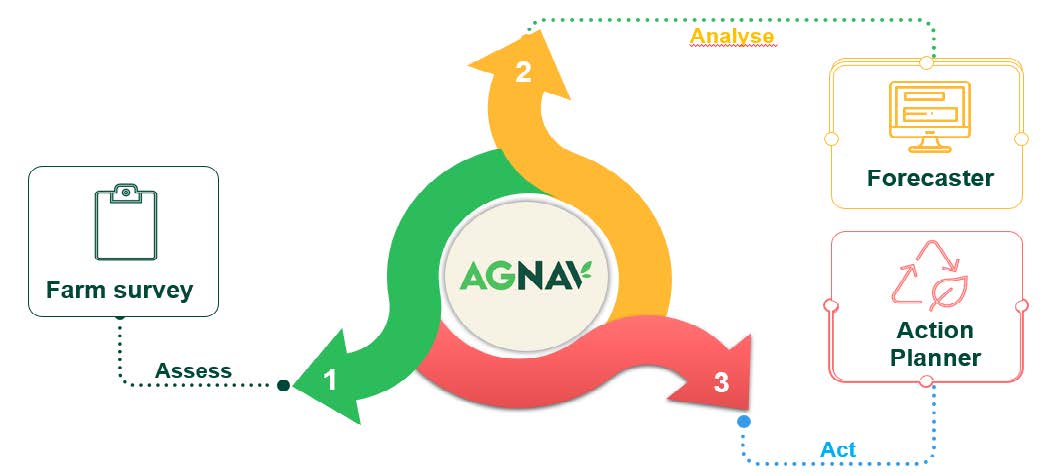About AgNav
AgNav is a farmer-centric sustainability platform created for Irish farmers by Bord Bia, Teagasc, and the Irish Cattle Breeding Federation (ICBF) with support from the Irish Department of Agriculture, Food and the Marine. AgNav utilises the three agencies’ collective knowledge, data, support tools, and other resources to help the Irish agri-sector deliver Climate Action Plan targets. AgNav provides reliable, science-based insights to support farmers’ environmental and economic goals.
Using AgNav, farmers can create customised farm sustainability action plans to help them reduce their emissions and improve water quality. AgNav is free and voluntary, and is currently available for beef, dairy, and tillage farms.
Assess
AgNav shows an assessment of current farm performance using data from Bord Bia, ICBF, Teagasc, and farmer-completed surveys. For beef and dairy farms, animal and production data from ICBF, along with information gathered in the Bord Bia Origin Green Producer Standard audit, are automatically entered into AgNav, which removes the need for farmers to do it themselves. Scientific models developed by Teagasc then use this data to calculate the individual farm’s performance under key sustainability metrics:
• Greenhouse gas (GHG) emissions
• Ammonia emissions
• Production
• Nutrient balance
• Soil carbon
Soil carbon will only be calculated if a farmer chooses to complete an AgNav-hosted survey on their farm’s soils. If they do, AgNav will calculate how much carbon is captured in their soil and can adjust the farm’s GHG emissions accordingly.
Analyse
The AgNav Forecaster is a core feature of the AgNav platform, and is currently available for dairy and beef enterprises. Farmers, or their advisors, can use the forecaster to analyse how changes in farming practices and management can impact each sustainability metric.
Act
Based on the forecaster analysis, dairy and beef farmers can identify which actions are most appropriate for their farm allowing them to create a personalised farm sustainability action plan. Farmers can choose from a wide variety of actions, such as reducing fertiliser use, enhancing soil fertility, and improving water quality.

